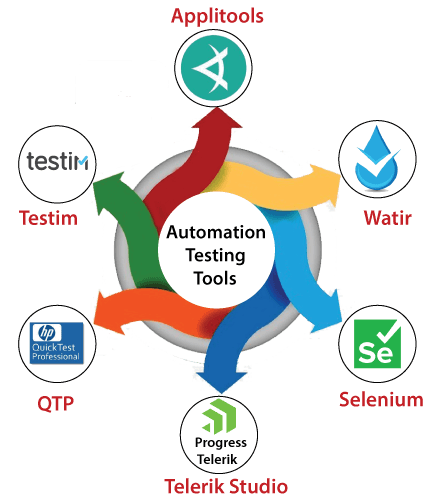Manual Testing Vs Automated Testing and Its Advantages
Manual Testing and Automated Testing and its advantages are two distinct approaches to software testing, each with its advantages and use cases. Let’s compare these methods:
- Manual Testing :
- Definition: Manual testing involves human testers executing test cases without the aid of automation tools. Testers manually verify the application’s functionalities, input data, and check the output against expected results.
- Advantages:
- Easy to get started with, as it does not require programming skills or automation tools.
- Suitable for exploratory testing, where testers can perform ad-hoc tests to uncover unexpected defects.
- Effective for one-time or ad-hoc testing, especially in early development stages when the application is evolving rapidly.
- Provides human judgment and intuition for evaluating user experience and usability.
- Limitations:
- Time-consuming and labor-intensive, especially for repetitive tasks and large test suites.
- Prone to human errors, which can impact test accuracy and consistency.
- Difficult to simulate a large number of users and complex test scenarios.
- Not suitable for continuous integration and frequent regression testing.
- Definition: Automated testing involves using specialized software tools to execute pre-scripted tests. Test scripts are created to simulate user interactions and verify expected outcomes automatically.
- Advantages:
- Faster and more efficient, as tests can be executed repeatedly with minimal human intervention.
- Provides higher test coverage, enabling the testing of numerous test cases and edge scenarios.
- Well-suited for performance testing, load testing, and stress testing to simulate large user volumes.
- Offers improved accuracy, reducing human-induced errors in test execution.
- Enables continuous integration and continuous testing, facilitating agile development processes.
- Limitations:
- Initial setup and maintenance of test scripts may require programming skills and resources.
- Automated tests are not as adaptable as humans when it comes to exploring new scenarios or detecting unexpected defects.
- Some user experience aspects, like visual verification, may require manual intervention.
- Complex test scenarios or dynamic web elements may be challenging to automate.
Conclusion: The choice between manual testing and automated testing depends on the project’s requirements, budget, timeline, and the specific needs of the testing process. Manual testing is valuable for initial exploratory testing and when dealing with frequent changes in the application’s functionality. On the other hand, automated testing is beneficial for regression testing, performance testing, and maintaining consistency across multiple test iterations. In practice, a combination of both methods, known as a hybrid approach, is often employed to leverage the strengths of both manual and automated testing techniques.
Manual Testing vs Automated Testing and its advantages
Manual Testing:

Advantages of Manual Testing:
- Flexibility: Manual testing allows testers to adapt and explore the application based on their intuition and expertise. Testers can identify new test scenarios and assess user experience more effectively.
- Cost-Effective for Small Projects: For small projects with limited resources, manual testing can be more cost-effective as it does not require investment in automation tools and scripts.
- Early Detection of Usability Issues: Manual testers can provide valuable feedback on usability aspects, such as user interface design and user interactions, which may be difficult to automate.
- Quick Start: Manual testing is easy to get started with as it does not require programming skills or extensive tool setup.
- Better for Exploratory Testing: Exploratory testing, where testers explore the application without predefined test scripts, is more effective when performed manually.
Automated Testing:

Advantages of Automated Testing:
- Time and Cost Savings: Once automated test scripts are set up, they can be executed repeatedly, saving time and effort compared to manual testing.
- Improved Test Coverage: Automated testing allows for comprehensive test coverage, enabling the execution of a large number of test cases and edge scenarios.
- Reliable and Consistent: Automated tests are less prone to human errors, ensuring consistent test execution and reliable results.
- Faster Feedback in Continuous Integration: In a CI/CD pipeline, automated tests provide rapid feedback on code changes, enabling faster releases and quicker bug identification.
- Scalability: Automated tests can handle large test data sets and simulate a high number of users, making them suitable for performance and load testing.
- Regression Testing: Automated tests are ideal for regression testing, ensuring that new changes don’t break existing functionality.
Conclusion:
The choice between manual testing and automated testing depends on the specific requirements of the project, the stage of development, and the available resources. Manual testing offers flexibility and is valuable in the early stages of development, while automated testing provides efficiency, scalability, and repeatability for regression and continuous integration testing. In many cases, a combination of both methods, known as a hybrid approach, can maximize the benefits of both manual and automated testing, helping to achieve high-quality software products.



